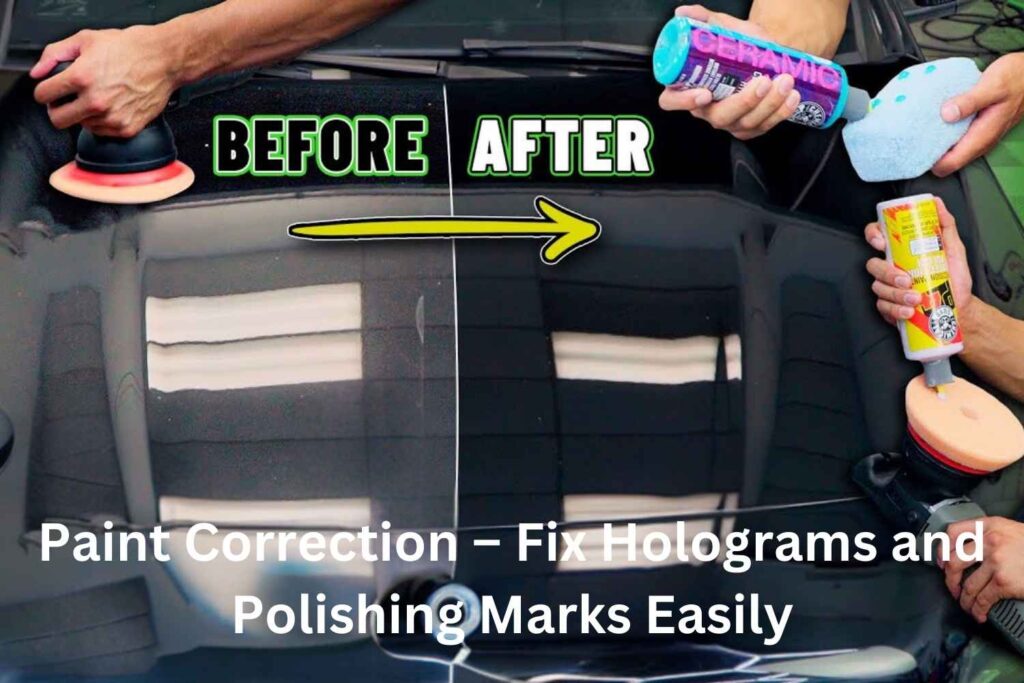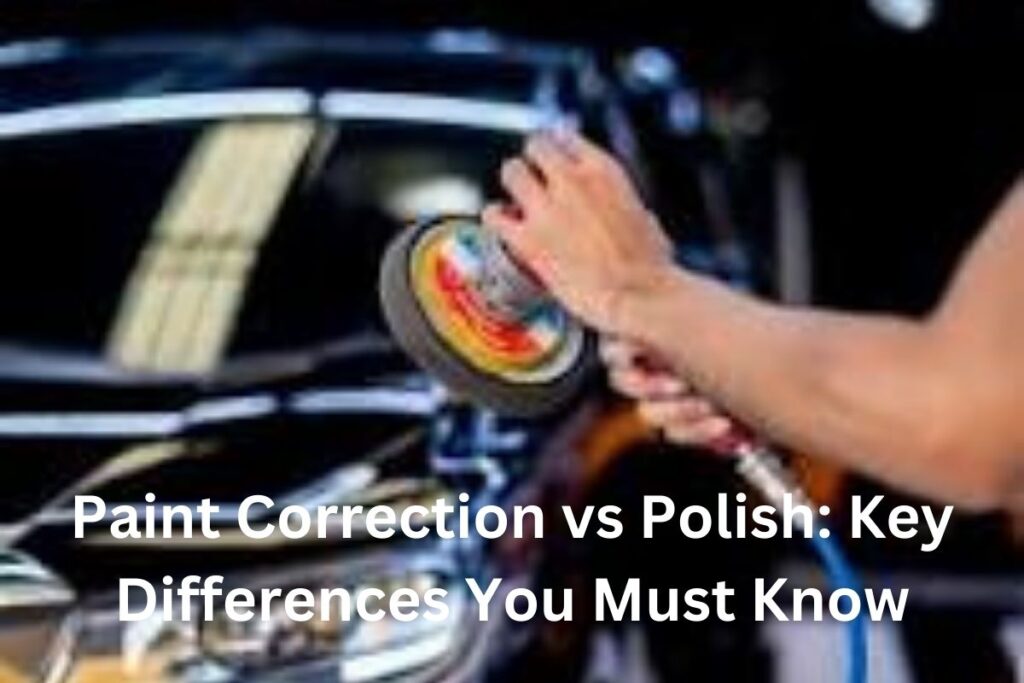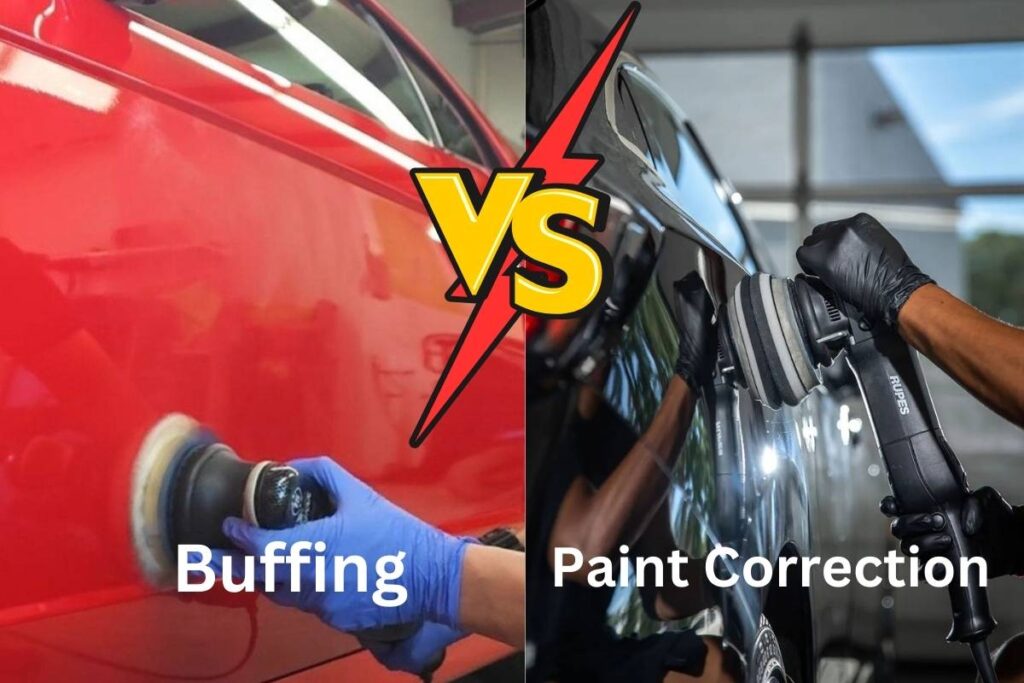Have you ever admired the flawless shine of a new car, only to notice small imperfections in the paint soon after? Imagine spending thousands on a vehicle, expecting it to be perfect, but finding tiny scratches, fading spots, or even bubbles in the finish. Could these imperfections have been avoided? Or are paint defects an inevitable part of owning a car, no matter how careful you are?
In this post, we’ll dive deep into the causes of car paint defects, from factory mishaps to damage during shipping or dealership prep. More importantly, we’ll explore what you can do as a car owner to prevent or fix these issues before they worsen. So, what really leads to these unsightly flaws, and how can you protect your investment? Let’s find out.
Table of Contents
ToggleWhat Are Car Paint Defects?
Car paint defects are problems with the car’s paint. These can be small, like swirl marks, or more serious, like bubbles, cracks, or peeling. Paint defects don’t just affect how the car looks. They can also lead to bigger problems.
The paint on a car is not just for looks. It protects the metal underneath from things like water, salt, and sunlight. If the paint gets damaged, it can’t protect the car. This can cause rust and other damage. When a car has paint problems, it may lose value. Buyers may think the car was not taken care of, or that it needs costly repairs.
There are many reasons why paint defects happen. These include issues during manufacturing, exposure to bad weather, or improper care. Even new cars can have paint defects. This can happen if the paint is not applied properly at the factory or if the car gets damaged while being shipped.
Common Types of Car Paint Defects

Swirl Marks
Swirl marks are small, round scratches on the car’s paint. They often happen when you wash your car with a dirty sponge or cloth. Dirt and debris get stuck in the sponge and scratch the paint when rubbed. Swirl marks are minor but can show up more in sunlight and affect the car’s shiny look.
Causes:
- Using dirty or rough cleaning tools.
- Drying the car with the wrong technique.
- Using automated car washes with harsh brushes.
Orange Peel
Orange peel is when the paint looks bumpy, like an orange’s surface. This happens when the paint doesn’t go on smoothly or doesn’t dry right. The result is an uneven texture on the paint.
Causes:
- Bad paint application, like using the wrong spray nozzle.
- Incorrect drying, such as too much moisture or heat.
Blistering/Bubbling
Blistering occurs when air or water gets trapped under the paint. This causes bubbles or blisters to form. It can happen right after painting or over time as moisture seeps in.
Causes:
- Poor surface prep before painting.
- Water trapped under the paint when applied.
- Exposure to extreme heat or sunlight.
Fading/Oxidation
Fading or oxidation is when the paint loses its shine and becomes dull. This is common in older cars. Sunlight breaks down the clear coat, causing it to fade. Over time, the paint can also erode and leave a chalky surface.
Causes:
- Too much exposure to sunlight.
- Not maintaining the paint with waxing or protection.
Cracking
Cracking, also called “crazing,” means tiny cracks appear in the paint. This can happen due to aging, sun exposure, or an incorrect paint mixture.
Causes:
- Sunlight weakening the paint.
- Bad paint mix or wrong layers.
- Old age of the paint.
Water Spots
Water spots are left behind when water evaporates on the car’s surface. They are caused by minerals in the water, like calcium or magnesium. If not cleaned off quickly, these spots can stick to the paint.
Causes:
- Letting water dry on the car, especially hard water.
- Rain followed by sun exposure, making water evaporate quickly.
Bird Droppings
Bird droppings are acidic and can damage the paint if not cleaned quickly. If left too long, they can eat into the paint and cause permanent damage.
Causes:
- Bird droppings not cleaned off in time.
- Weather speeding up the damage process.
How to Identify Car Paint Defects
Identifying paint defects early helps stop more damage and keeps your car’s paint looking good. Regular checks help you find problems before they get worse.
Step-by-Step Guide for Checking Paint Defects
- Visual Inspection: Look at your car in different lights. Natural light is best for spotting swirl marks and fading. Use a garage light or flashlight to see deeper problems like cracks or bubbles.
- Touch Test: Run your hand gently over the paint. Rough spots or bumps could mean problems like orange peel, blisters, or water spots.
- Magnifying Glass or Inspection Light: For a closer look, use a magnifying glass or inspection light. This helps you spot small scratches, cracks, or other flaws that are hard to see with just your eyes.
Finding defects early is important, especially with a new car. It’s easier to fix problems before they get worse. New car owners should check the paint as soon as the car arrives. If you find issues, report them to the dealer right away.
Causes of Car Paint Defects
Environmental Factors
The environment is one of the main causes of car paint problems. Long exposure to the sun can make the paint fade. Things like pollution, acid rain, and bird droppings can also harm the paint if not cleaned off quickly. Harsh weather, like heat or cold, can cause the paint to blister, crack, or peel.
Improper Washing/Waxing Techniques
Many car owners damage their car’s paint by using the wrong washing or waxing methods. Using rough materials, dirty sponges, or drying the car the wrong way can cause swirl marks, scratches, and bigger problems over time.
Manufacturing and Transportation Issues
Even new cars can have paint problems. Sometimes, mistakes during painting at the factory lead to issues like orange peel or bad adhesion. During transportation, the car can be exposed to weather or mishandled, causing defects before it reaches the dealership.
Improper Surface Preparation
Before painting a car, the surface must be prepared correctly. If the surface isn’t cleaned, sanded, or primed well, it can cause problems like bubbles, peeling, or cracks. Rushed or poorly done paint jobs can cause these issues in both factory and repainted cars.
How to Fix Common Car Paint Defects
Swirl Marks
You can get rid of swirl marks with polishing compounds and a buffer tool. First, wash the car to clean off dirt. Then, apply the polish to the scratched spots. Use the buffer in small circles to remove the scratches.
Orange Peel
Fixing orange peel takes a little more work. You need to wet sand the surface with fine sandpaper and water. Once the surface is smooth, use a machine to polish it and bring back the shine.
Blistering
To fix blistering, you need to sand the area to remove the bubbles. Then, clean it well and repaint the spot. Make sure to use a primer before adding new paint to help it stick.
Cracking
Fixing cracked paint means sanding the area, applying primer, and repainting. If the crack is large, you may need to repaint the whole panel to make it look smooth.
Water Spots
Water spots come off with special cleaners made for hard water stains. For deeper spots, you might need to lightly polish the surface to remove them completely.
Fading/Oxidation
To restore faded or oxidized paint, use a polishing compound or wax to bring back the shine. If the paint is very faded, you may need professional buffing or repainting.
Preventing Car Paint Defects
Avoiding Extreme Environmental Exposure:
Park your car in a garage or under shade when you can. This will protect it from strong sunlight, acid rain, and pollution. If you must park outside, use a good car cover to keep the paint safe.
Quick Removal of Bird Droppings and Other Contaminants:
Bird droppings, tree sap, and bugs can damage your car’s paint. They are acidic and can cause lasting harm if left too long. Clean them off as soon as you notice them. Keep a cleaning spray and soft cloth in your car for quick cleanups.
Professional Detailing Services:
While it’s good to take care of your car yourself, it’s also a good idea to get it professionally detailed once a year. Detailers use better tools and products to clean, polish, and protect your car’s paint. This can stop damage from getting worse.
By following these steps, you can keep your car’s paint in great shape and make it last longer.
Car Paint Defects in New Cars
Even new cars can have paint problems, even though they go through checks at the factory. As a new car buyer, you should know that defects can happen during manufacturing, transportation, or when the dealer preps the car. Here’s why:
Manufacturing Problems
One common reason for paint issues is bad paint application at the factory. Sometimes the process is rushed, causing problems like bumps, bubbles, or paint that doesn’t dry right. Dust or dirt can also get trapped under the paint, making the surface imperfect.
Damage During Transportation
When cars are shipped from the factory to the dealership, they are exposed to the elements. Sunlight, rain, or physical bumps during shipping can cause paint to fade, chip, or scratch.
Dealer Prep Mistakes
At the dealership, cars are cleaned and prepped before delivery. But improper washing or waxing can leave swirl marks, scratches, or other defects. The dealership may use old equipment or rush the cleaning, which can harm the paint.
Tips for New Car Buyers
To avoid paint defects in your new car, follow these steps:
- Inspect Carefully: Before you accept the car, check it thoroughly in both natural and artificial light. Look for swirl marks, bumps, or uneven paint.
- Report Quickly: If you find any defects, tell the dealer right away. Most new cars come with warranties that cover paint issues, and reporting early increases your chances of getting a free fix.
- Consider Extra Protection: After buying your new car, think about adding a ceramic coating or sealant to protect the paint from future damage.
When to Seek Professional Help for Car Paint Defects
You can fix some small paint problems yourself, but sometimes it’s best to get help from a pro. Here are times when you should visit an auto body shop:
Serious Damage
If your car has deep cracks, peeling paint, or large faded spots, you need professional help. These problems often require advanced work like repainting or sanding, which should be done by experts with the right tools.
No Tools or Experience
Even if you want to fix the paint yourself, some repairs need special tools like paint guns or sanders. These tools are hard for most people to get. Trying to fix the paint without the right tools can make things worse, and the repair could cost more later.
High-Value or Classic Cars
If you have a luxury or classic car, keeping the original paint is important to keep its value. DIY fixes or amateur repairs can lower its worth. Professionals make sure the paint looks right, keeping the car’s value and appearance.
When to Ask for Help
If you’re not sure, it’s always good to ask a pro for advice. A trusted auto body shop can check the damage and suggest the best fix, saving you time and trouble.
In Conclusion
Car paint defects might seem unavoidable, but you can still prevent or fix them. By learning about the causes and types of paint problems, you’ll be better prepared to stop them early. Regularly checking your car’s paint and cleaning it the right way will help keep it looking good. If you notice any issues, act quickly to stop further damage.
Here are some easy steps you can take:
- Check Your Car Often: Get in the habit of looking at your car’s paint in both sunlight and indoor light. Look for small problems like scratches, fading, or bubbles early on.
- Clean Your Car Right: Use soft, clean cloths when washing or waxing your car. Avoid rough car washes that can scratch the paint.
- Protect from the Weather: If you can, park in a garage or use a car cover. This helps shield your car from harsh sunlight and other harmful weather conditions.
- Clean Off Bird Droppings Fast: Keep a cleaning kit in your car. If you see bird droppings or tree sap, clean them right away to avoid damage.
- Call a Professional When Needed: For bigger problems like paint blisters, cracks, or peeling, it’s best to get help from a professional auto body shop.
By following these steps, you can keep your car’s paint looking great and protect its value for years to come.
Frequently Asked Questions (FAQs)
What are the most common car paint defects?
People frequently ask about the most prevalent types of paint issues such as swirl marks, orange peel, cracking, blistering, and fading.
Can new cars have paint defects?
Many buyers are curious if even new cars can exhibit paint defects and want to understand potential causes like manufacturing errors or transportation damage.
How do I fix common car paint defects?
Car owners often seek solutions for fixing defects like scratches, bubbling, or fading, including DIY approaches versus professional repairs.
What causes car paint defects?
Common causes such as environmental exposure, improper application, or poor maintenance are frequent topics of inquiry.
How can I prevent car paint defects from occurring?
Users often ask for tips on how to protect their car’s paint, including preventive measures like ceramic coatings, regular washing, and protective covers.







